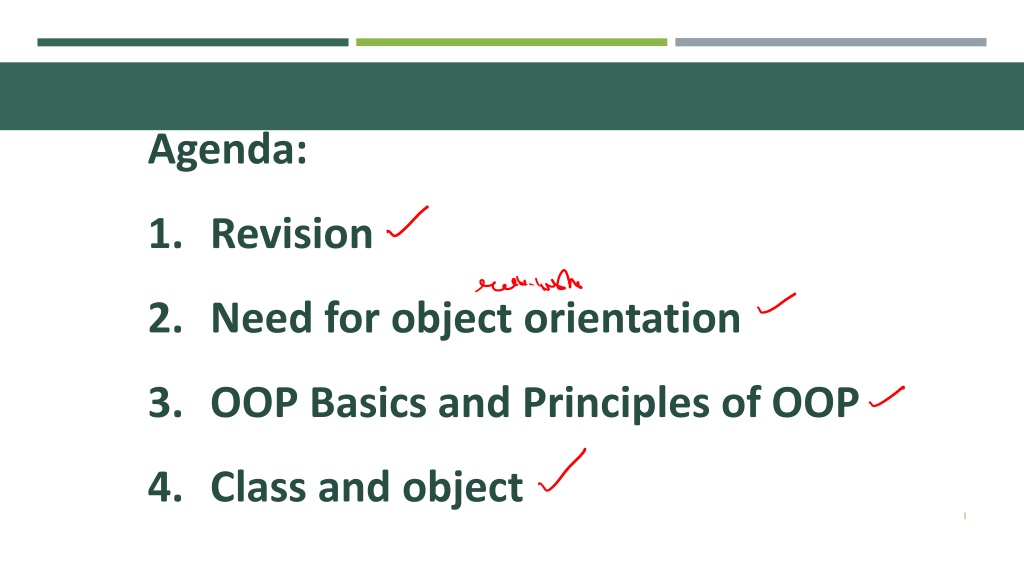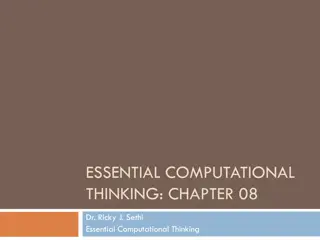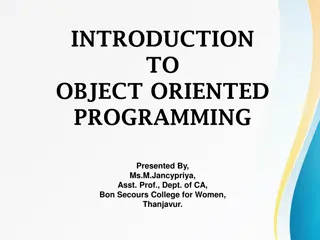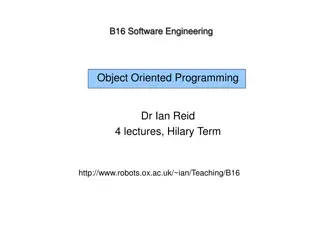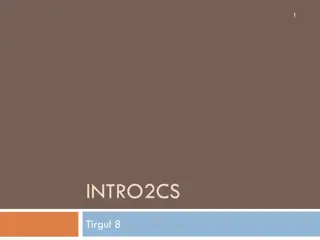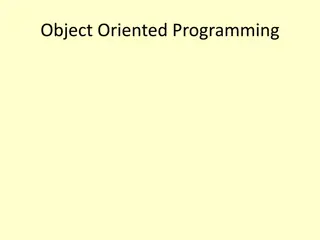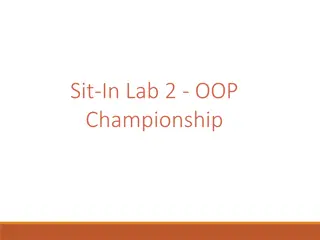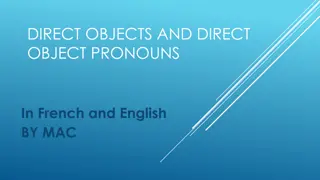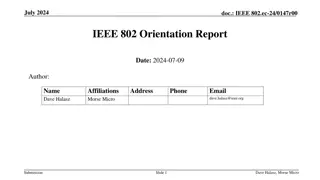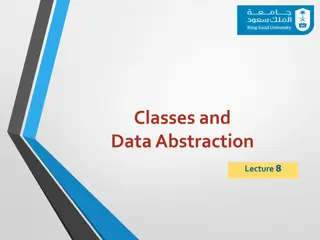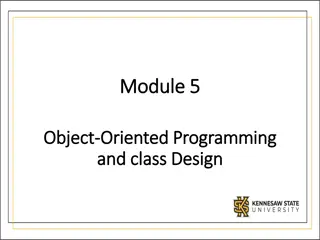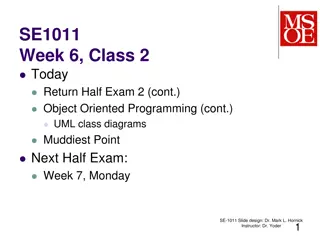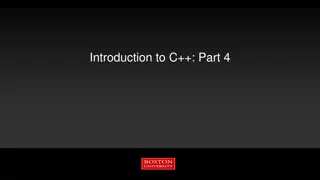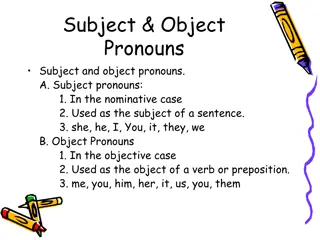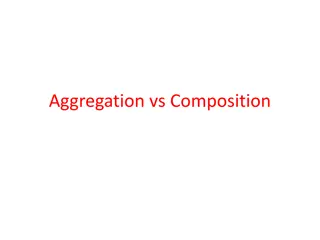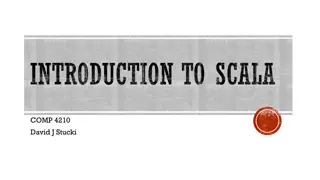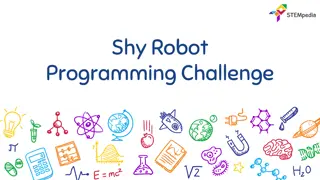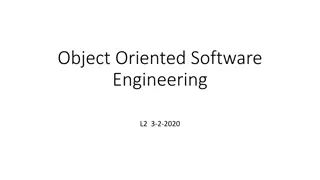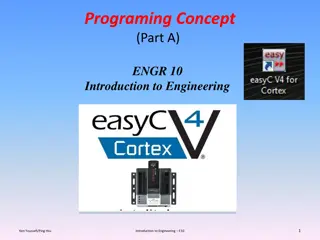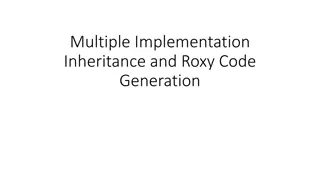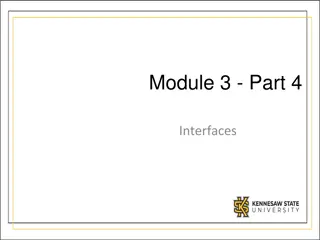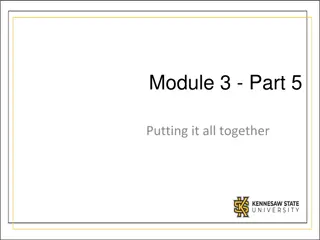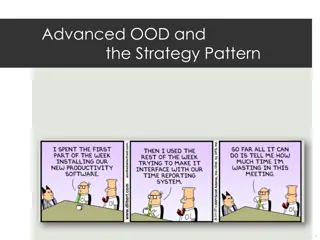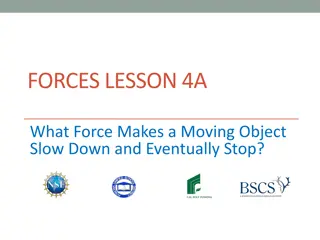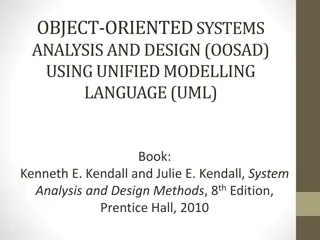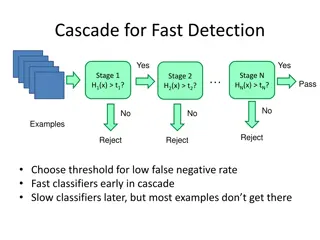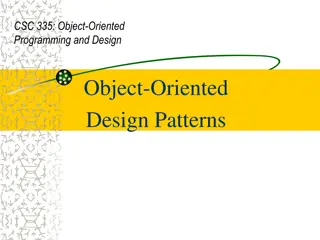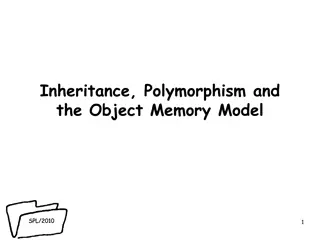Introduction to Object Orientation and OOP Principles
Understanding the basics of Object-Oriented Programming (OOP) is crucial in modern software development. The agenda covers revision, the need for object orientation, principles, classes, and objects. Questions and assignments provide practical scenarios to apply OOP concepts effectively.
Download Presentation

Please find below an Image/Link to download the presentation.
The content on the website is provided AS IS for your information and personal use only. It may not be sold, licensed, or shared on other websites without obtaining consent from the author. Download presentation by click this link. If you encounter any issues during the download, it is possible that the publisher has removed the file from their server.
E N D
Presentation Transcript
Agenda: 1. Revision 2. Need for object orientation 3. OOP Basics and Principles of OOP 4. Class and object 1
Revision 2
Question1: In Olympics, the countries are ranked by the total number of medals won. You are given six integers G1, S1, B1, and G2, S2, B2, the number of gold, silver and bronze medals won by two different countries respectively. Determine which country is ranked better on the leader board. It is guaranteed that there will not be a tie between the two countries. 3
Question2: Kiran has 3 boxes of sizes A, B, and C respectively. He puts the boxes in bags of size D (A B C D). Develop a code to find the minimum number of bags Kiran needs so that he can put each box in a bag. A bag can contain more than one box if the sum of sizes of boxes in the bag does not exceed the size of the bag. 4
Question 3: Rani has 3 bags that she wants to take on a flight. They weigh A, B, and C kgs respectively. She wants to check-in exactly two of these bags and carry the remaining one bag with her. The airline restrictions says that the total sum of the weights of the bags that are checked-in cannot exceed D kgs and the weight of the bag which is carried cannot exceed E kgs. Find if Rani can take all the three bags on the flight. 5
Question 4: Kattappa is great warier in his time in mahishmathi kingdom. He seems to be more superstitious person. He believes a soldier is lucky if he posses even number of weapons and unlucky otherwise. He will be ready for the battles if no of lucky soldiers are strictly more than number unlucky soldiers. Given number of soldiers and weapons they poses develop python code to find weather Kattappa is Ready for the battle or not 6
Question 5: Amish is a software developer, so he has to switch between different languages sometimes. Each programming language has some features, which are represented by integers here. Currently, Amish has to use a language with two given features A and B. He has two options --- switching to a language with two features A1 and B1, or to a language with two features A2 and B2. All four features of these two languages are pairwise distinct. Tell Amish whether he can use the first language, the second language or neither of these languages (if no single language has all the required features) 7
Assignment 1: Pooja would like to withdraw X $US from an ATM. The cash machine will only accept the transaction if X is a multiple of 5, and Pooja's account balance has enough cash to perform the withdrawal transaction (including bank charges). For each successful withdrawal the bank charges 0.50 $US. Calculate Pooja's account balance after an attempted transaction. Example - Successful Transaction Input: 30 120.00 Output: 89.50 Example - Incorrect Withdrawal Amount (not multiple of 5) Input: 42 120.00 Output: 120.00 Example - Insufficient Funds Input: 300 120.00 8 Output: 120.00
Assignment 2: You have prepared four problems. The difficulty levels of the problems are A1,A2,A3,A4 respectively. A problem set comprises at least two problems and no two problems in a problem set should have the same difficulty level. A problem can belong to at most one problem set. Find the maximum number of problem sets you can create using the four problems. Each test case contains four space-separated integers A1, A2, A3, A4, denoting the difficulty level of four problems. For each test case, print a single line containing one integer - the maximum number of problem sets you can create using the four problems. 9
Principles of OOP Class & Object Abstraction Encapsulation Inheritance Polymorphism 11
Class & Object Classes provides a blueprint or a template using which objects are created A class creates a new type and object is an instance (or variable) of the class in Python, everything is an object or an instance of some class For example, all integer variables that we define in our program are actually instances of class int. 12
Abstraction Hiding the unnecessary information Hiding implementation details 13
Encapsulation Wrapping of data and methods 14
Inheritance Acquiring properties of parent to child Reusability 15
Polymorphism Many forms Method overloading Method overriding Operator overloading 16
Defining a class Creating an object 17
Example1: Example 2: 18
Example 3: Create a class called Box which has three dimensions length, breadth, depth. Create a constructor and define volume method. Use volume method to find volume of the Box object 19
Example 4: Create a class called Rect which has two dimensions length, breadth. Create a constructor and define methods called area() and perimeter(). Use these methods to find area and perimeter of the Rect object 20
